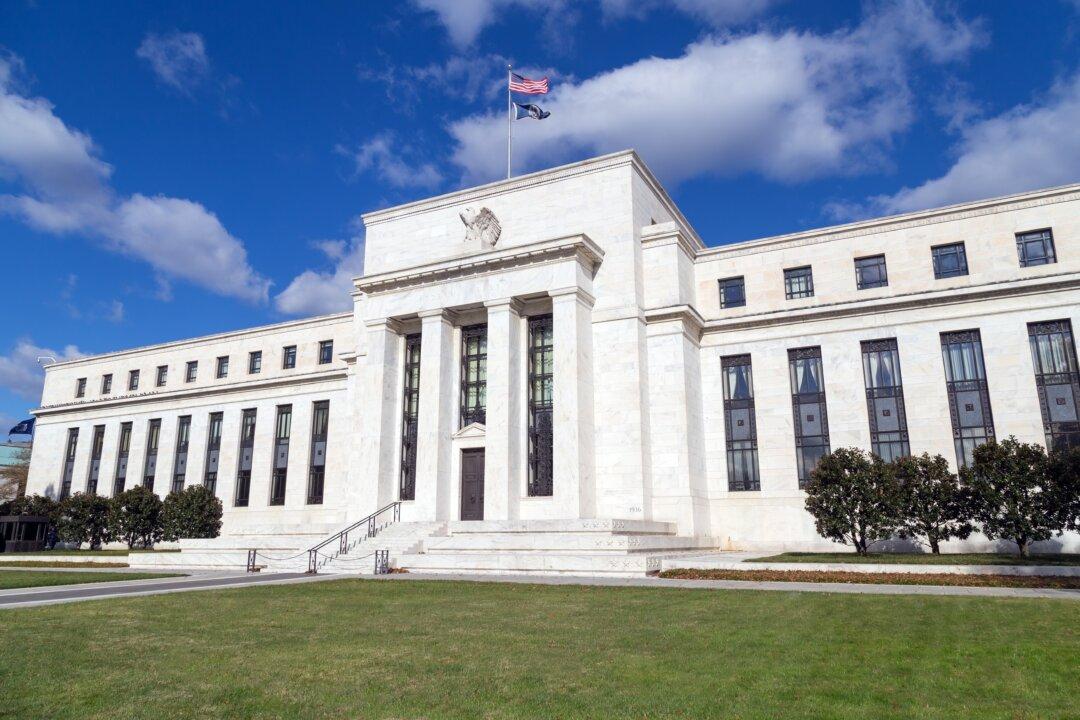There are three layers to the U.S. state that lord it over the American people and the world: deep, middle, and shallow. It’s a typology of how technocracy works in practice. Let’s talk about how it works and how the layers interact.
Former President Donald Trump popularized the term deep state, and it’s a good one. There is a large and serious literature on the topic. It refers mostly to the long-operating and largely out-of-public-eye intelligence agencies and their cut-outs in the private sector. It includes security agencies, which means CIA but also some portions of the FBI, NSC, NSA, CISA, DHS, top brass at the Pentagon, and more.
They are the most powerful force in U.S. politics and have been for many decades. Anyone who calls them out is called a “conspiracy theorist” simply because there is a lack of documentation for these claims that everyone knows are true. They are “classified,” Washington’s magic term for anything they want to hide from you.
Lately, there has been an opening up on this topic, very much because of Robert F. Kennedy Jr., President Trump, journalist Mike Benz, and many others who have worked so hard over the years to expose the cabal. This new attention is mostly due to a series of audacious plots that unfolded since 2016: the bogus claim of Russian interference in the election, as manufactured by the deep state; the surreptitious weaponization of the justice system still ongoing; and the pandemic policies that had deep-state fingerprints all over them.
The middle state is the administrative bureaucracy, the civil service, as they are called. Invented by the Pendleton Act of 1883 and growing through wars and crises, and deeply entrenched in the 21st century, it’s more than 2 million strong and consists of more than 400 agencies, some innocuous and some deeply threatening. Elected politicians only pretend to control the middle state, but the reality is the opposite. They are the people with permanent positions, institutional knowledge, and the focus to preserve the status quo no matter who shows up in town for the party.
Very often, newly elected politicians come to town naively hoping to make some difference. They quickly encounter an awesome and impenetrable force all around them, staffers moving from office to office, random people from agencies about which they have never heard, and briefings designed to introduce the newbie to the ways of Washington but which are really designed to intimidate them into compliance. Most newly elected leaders arrive with no real understanding of this system.
That’s what President Trump faced when he was elected. He believed that the president was supposed to be in charge, like a CEO or an owner of a company. That’s the only world he knew, one in which he was at the top of the heap and his word was a marching order. He figured that this day would arrive after the inauguration. It didn’t. He simply couldn’t get over it and was never willing to play the marionette as others had done in exchange for plaudits and payoffs.
Once President Trump figured it out, he assigned his trusted staff to do something about it. He issued a series of executive orders to get the middle state under control. In May 2018, he took his first steps to gain some modicum of control over this deep state. He issued three executive orders (E.O.13837, E.O.13836, and E.O.13839) that would have diminished their access to labor union protection when being pressed on the terms of their employment. Those three orders were litigated by the American Federation of Government Employees and 16 other federal labor unions.
The third layer is the shallow state. It consists of legacy media outlets such as CNN, The New York Times, The Washington Post, and MSNBC, in addition to social media companies such as Facebook, LinkedIn, and Reddit, as well as common internet tools such as Google and Wikipedia. It includes military contractors and tax-supported academia as well.
These are all captured institutions, with revolving doors with the deep and middle states. The reporters at these large media outfits have close relationships with the top bureaucrats at the agencies they cover, which is why the agencies themselves are rarely investigated closely.
When lockdowns came, Facebook and all the mainline social media companies instantly signed up to be both propagandists and censors. When they worried about the effect on their business models, middle and deep-state bureaucrats hounded them to step it up and serve their masters. They mostly complied. We know all this by virtue of tens of thousands of pages of correspondence that’s now moving through the courts, possibly resulting in judgments that would bring back the First Amendment.
The shallow state also includes a major swath of the banking and financial sector that depends fundamentally on the benevolence of the middle-state Federal Reserve to provide an uninterrupted stream of liquidity to fuel its operations. In some sense, the entire system mapped out here depends on this funding source, without which the lockdowns, wars, welfare state, and enormous corporate subsidies (to pharma, agriculture, and the Green New Deal) couldn’t and wouldn’t exist.
What is and isn’t included in the shallow state is obviously debatable on many levels. What about an institution that massively benefitted from lockdowns, such as Amazon, but didn’t actively lobby for the policy? How does the fact that its founder and major investor also owns The Washington Post, which did push for lockdowns, affect the judgment? And what about online learning companies that got rich solely because of school closures? Are they also shallow state? There are good discussions to have here.
The relationship between the three layers is perfectly illustrated in the way pharmaceutical companies work. They do the bidding of the deep state with biodefense work that is classified, making both pathogens and antidotes. They work with the middle state, with board members and managers of companies going back and forth with the NIH and FDA, sharing royalties on new patented consumer products. The companies then dominate advertising on all the main media venues, which means that the media covers up for them at every turn and echoes deep- and middle-state priorities.
If you are seeking to set up and manage a 21st-century technocratic regime, the ideal mechanism of compulsion and coercion is centered in the shallow state, because it is private, consumer-facing, and trusted more than any other layers of the state. Every form of coercion can be “market washed” as if these are purely private actions taking place. The strategic objective of any really good plan for hegemony, then, is to push the agenda from the deep state, through the middle state, and land in the shallow state for distribution to the public.
That’s because the shallow state is the most effective tool for bringing about results. You want the large corporations and big finance to be the ones to move against political enemies, and you want the major media rather than the agencies to distribute the propaganda. You want the doctors to sell the drugs and the search engines to generate the message. Whatever trust remains is centered on these shallow-state institutions; therefore, they are the ones you want to capture to do your bidding.
Yes, it all sounds very corrupt. It is. And it has absolutely nothing to do with this document called the Constitution, which is supposed to be the real law of the law. For the three-layer state, this document simply doesn’t matter. A quiet coup has taken place over the decades that has entrenched this wild system in contradiction to everything the Founding Fathers desired.
All three are right now plotting to resist a possible victory by President Trump in November. The notion that he would win in 2016 seemed outlandish. But the prospect of returning after a four-year hiatus to gain the presidency again is nearly miraculous. In any case, it is something no one imagined possible a few years ago.
Indeed, it is easily one of the biggest political comebacks in history and amounts to the closest thing we’ll likely ever see to a genuine revolution in modern times. What comes of it, we’ll have to find out, but this much is clear: The whole of the three-layered state has done everything to stop it. Right now, the whole system is in complete freak-out mode, in full display of the whole world.
There is plenty of reason to doubt aspects of the Trump agenda. I’ve personally authored what is by now a large literature against features of the ideology that drives it. But there is no getting around the real issue today. We are nearing a perfect battle between the people, who are supposed to rule or at least have some line of influence over the regime, and this three-layer cartel of overlords that is actually in charge.
No one who aspires to freedom and dignity can possibly defend this status quo, so it makes sense to look forward to its overthrow, if it’s at all possible.







